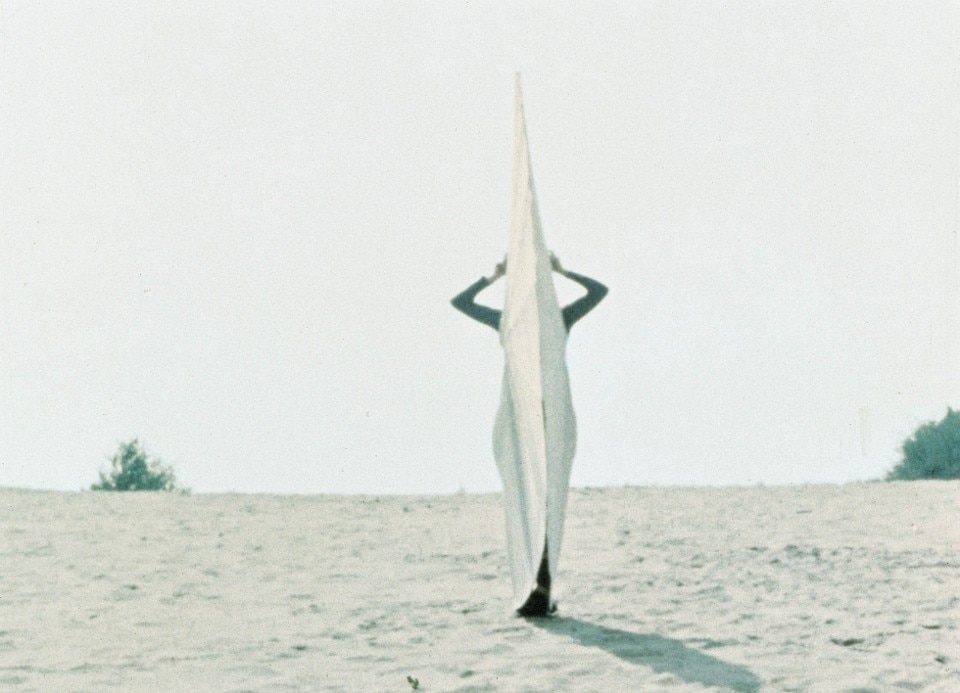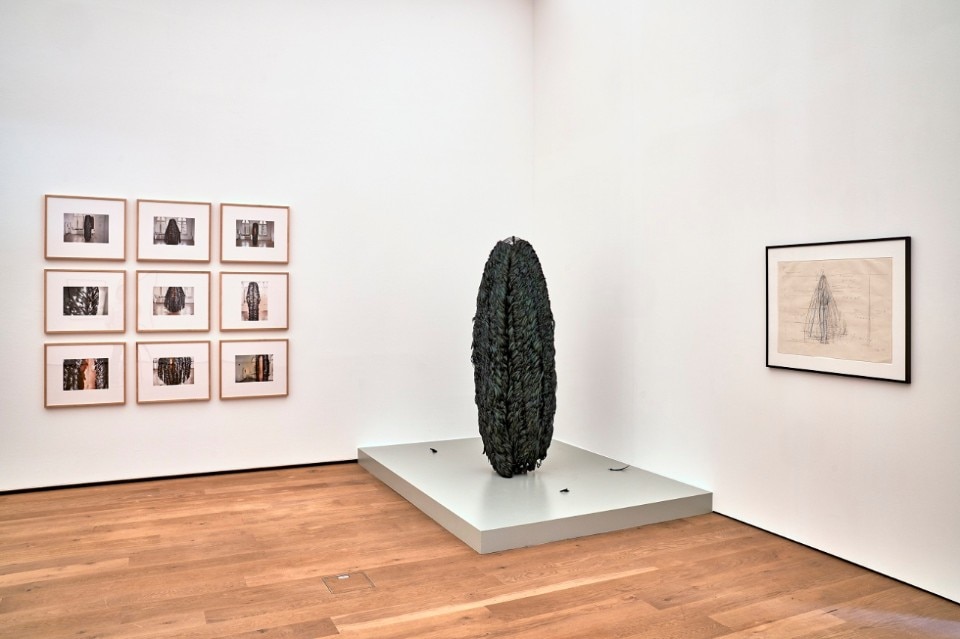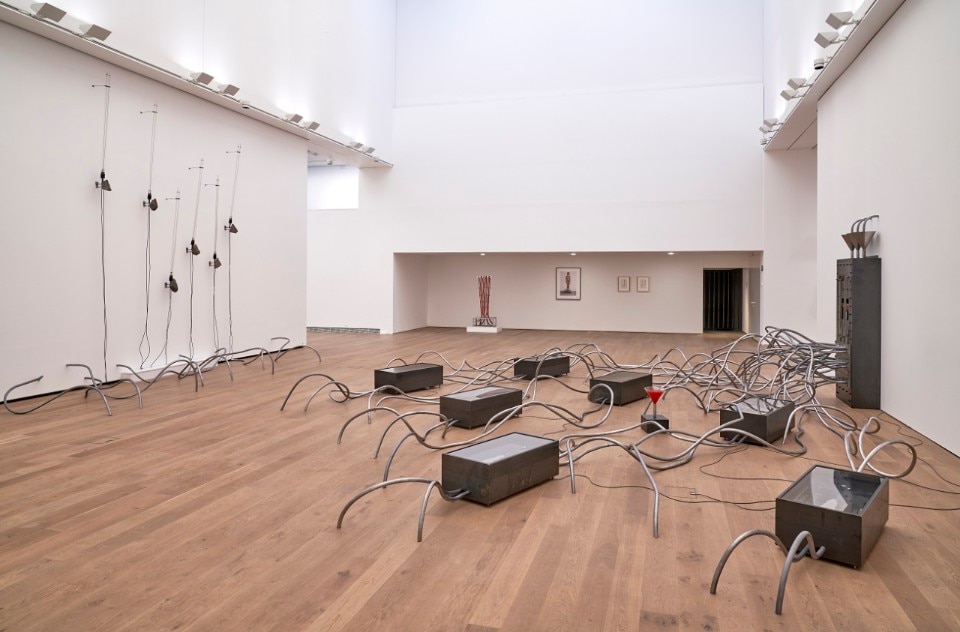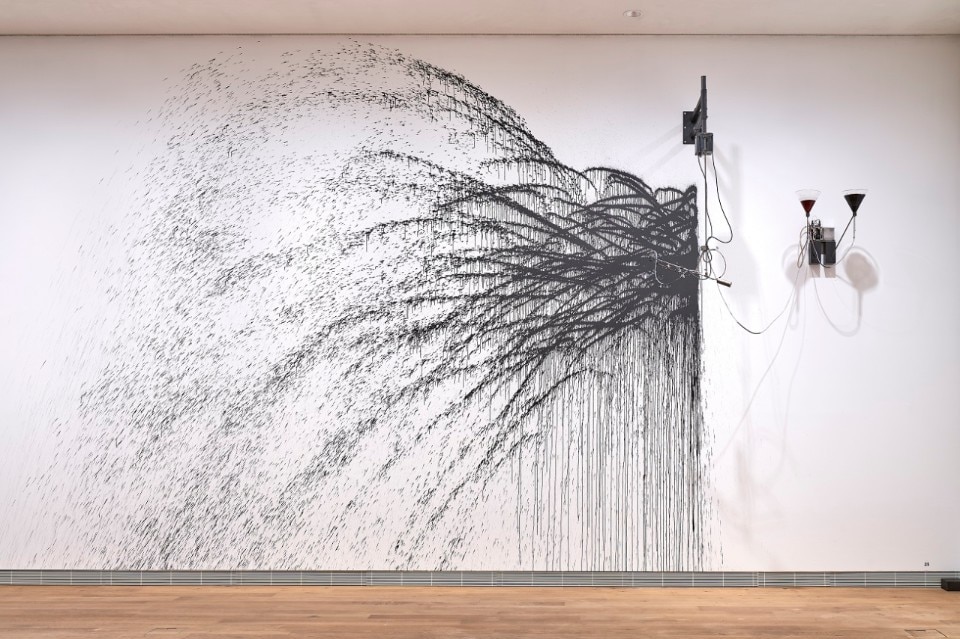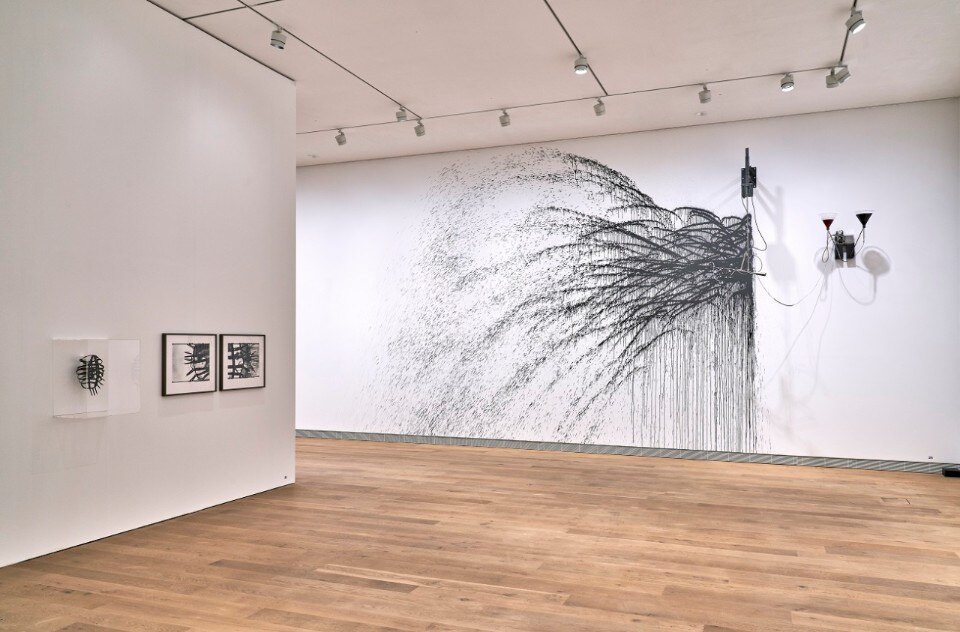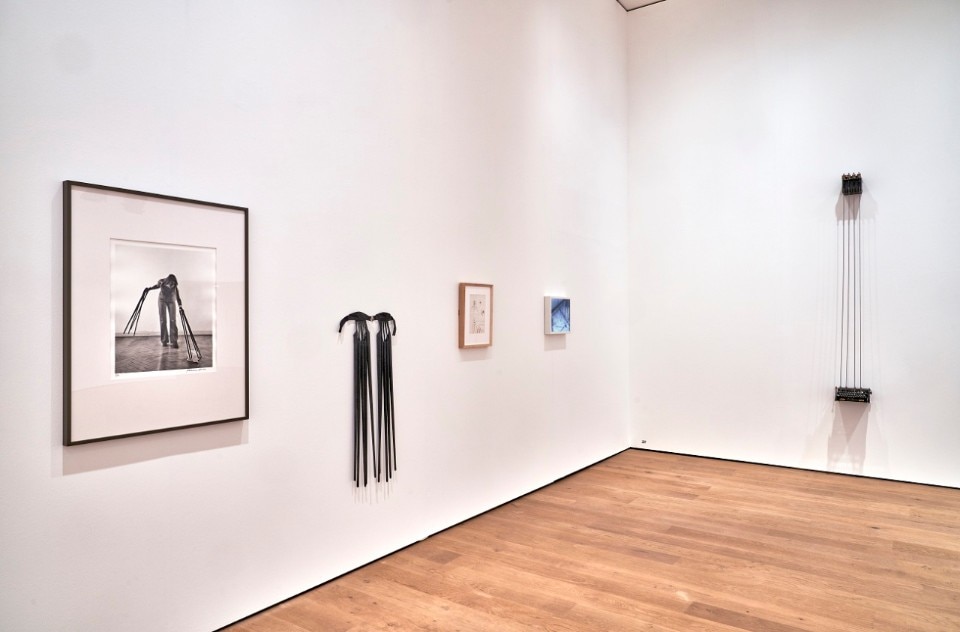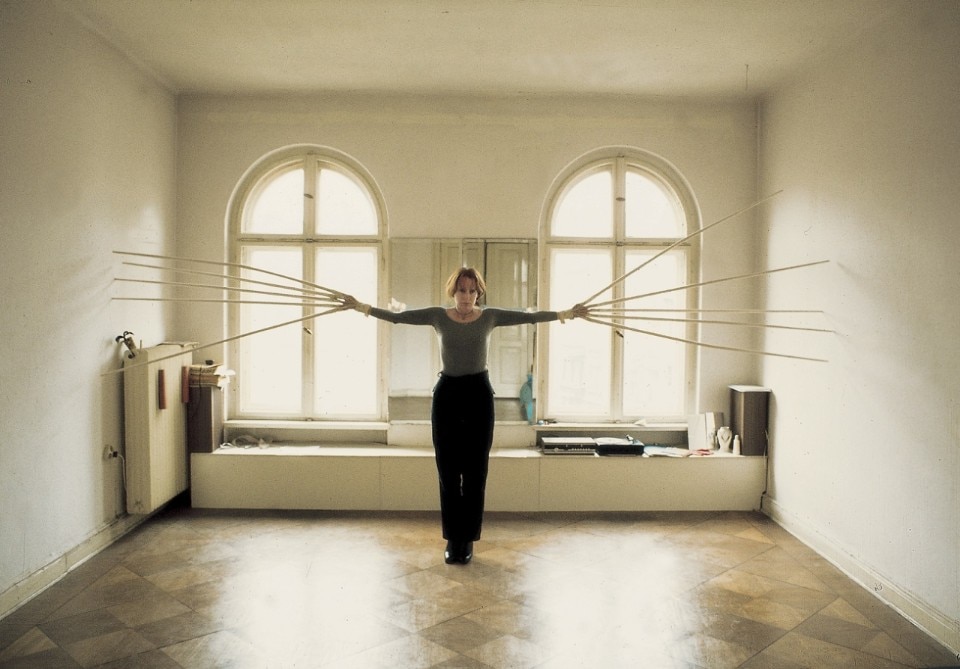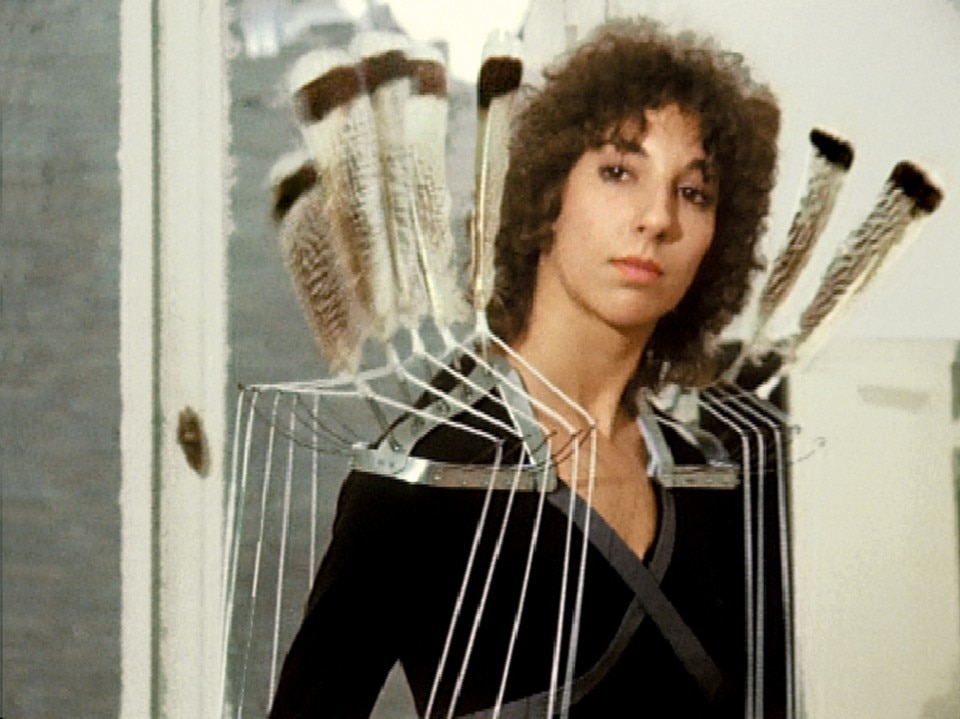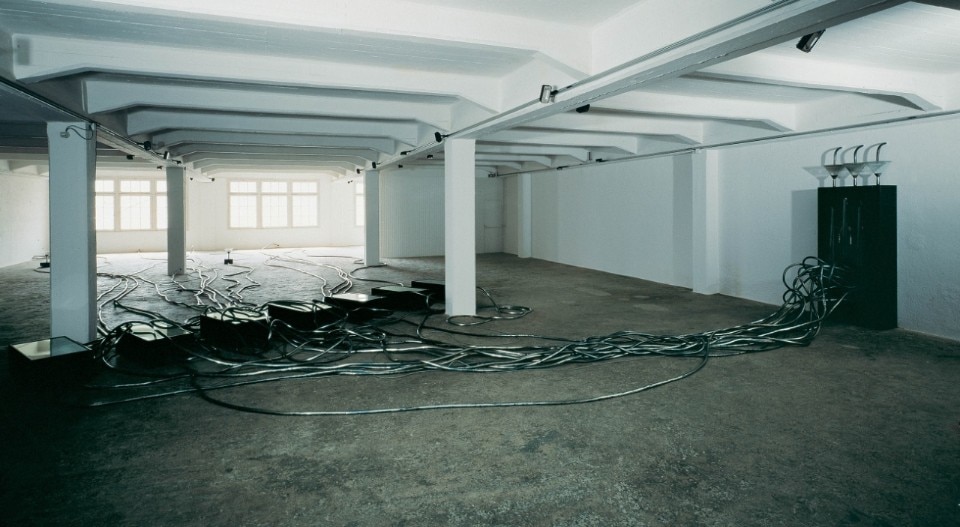On June 2019, for the first time, the Centre Pompidou-Metz and Museum Tinguely in Basel are twined, in the name of Rebecca Horn (1944, Michelstadt,). The institutions are running two parallel physical parcours, sharing complementary insights into the work of a priestess artist, a creator. The exhibition Theatre of Metamorphoses explores in Metz the diverse theme of transformation from animist, surrealist and mechanistic perspectives, placing special emphasis on the role of film as a matrix within Horn’s work. In the Body Fantasies show in Basel, which combines early performative works and later kinetic sculpture to highlight lines of development within her oeuvre, the focus is on metamorphosis processes of body and machine. In resonance with the exhibition Theatre of Metamorphoses, at Centre Pompidou-Metz, Body Fantasies at Museum Tinguely, in Basel, retraces artist’s inspiration from the individual body and from its movements. The exhibition juxtaposes performative works and later machine sculptures in order to follow the unfolding development of motifs of movement.
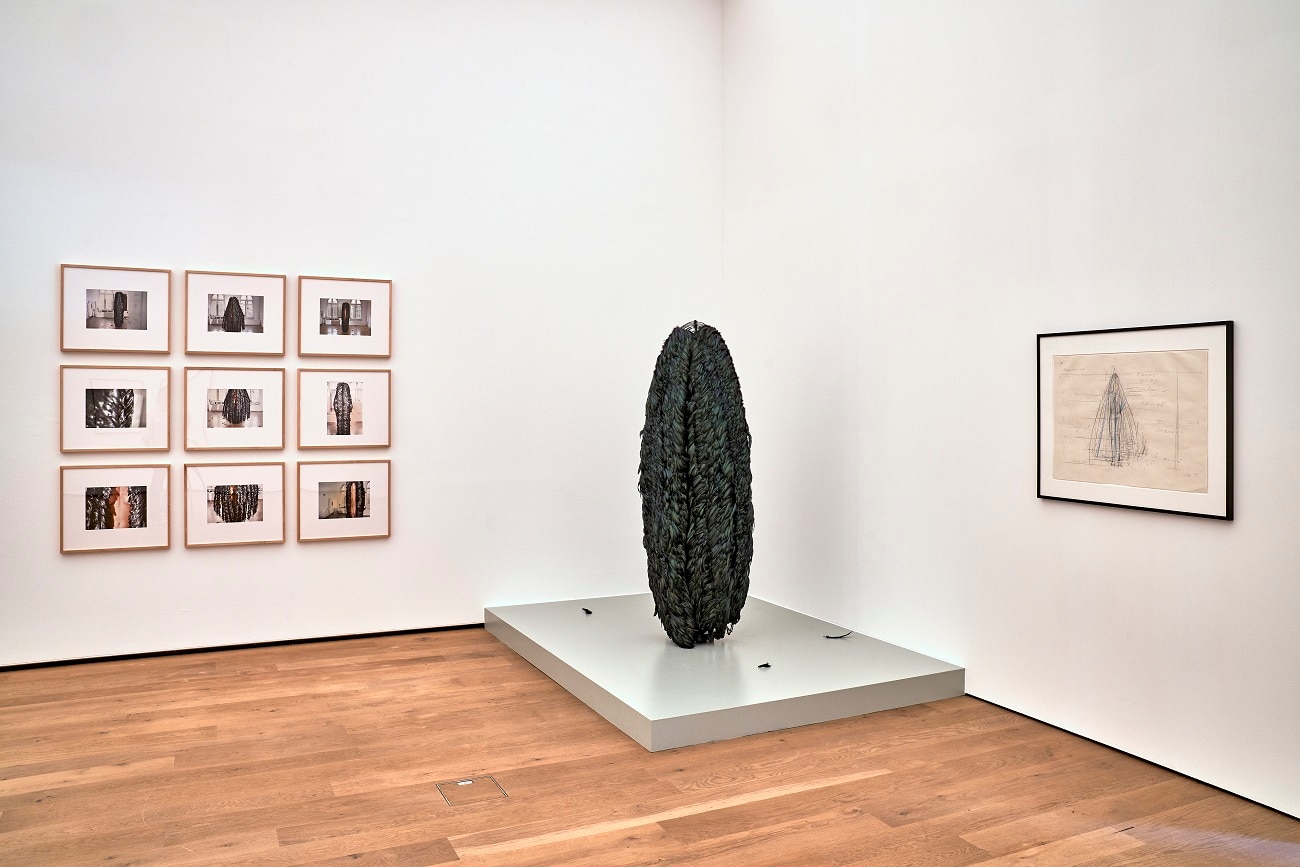
Divided up into four themes, the Basel show traces the development of her works as stations in a process of transformation, emphasizing methodologies and practices in her work. Her body sculptures, prostheses made of textiles or equipped with feathers, engage in a tactile exploration of space, a haptic bodily experience. At first sight they strongly contrast with these cold precision mechanisms in metal, which are typical of her later kinetic works. The living and the inert appear transfigured, the object is endowed with a soul, the individual is characterised by his physical frailty and his capacity to reinvent himself. From there is born the troubling strangeness of her work. Rebecca Horn perpetuates in a unique manner, the themes bequeathed to us by mythology and fairy tales, such as metamorphosis into a hybrid or mythical creature, the secret life of the world of objects, the secrets of alchemy, or the fantasies of body-robots. Within this exhibition, the drawing section represents the precious core, the treasure chest of Body Fantasies. Here the artist regularly explores the implication of identity with her automated painting machines, of which two models are presented here (Salomé, 1988 and The lovers, 1991). The drawing as an inclusion of the body and of the psyche is ultimately brought back in the large-scale paper works in the series Bodylandscapes, produced by her hands in 2004 and 2005. Their dimensions refer directly to the size of the artist and to the range of her movements. Drawn lines and coloured marks, considered as many traces of body movements, look like living, vivid reflections of Horn’s mind.
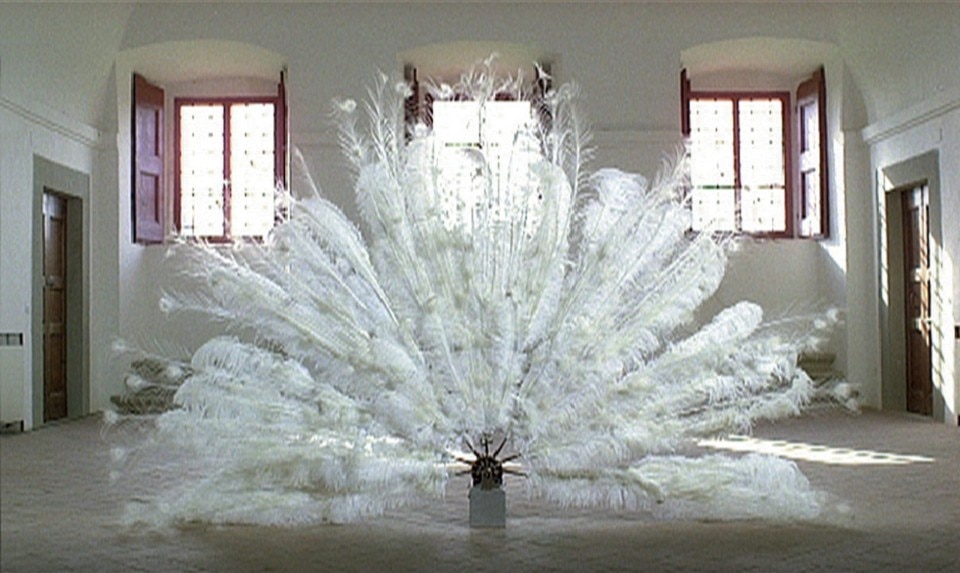
This motive is initiated by the Bleistiftmaske (Pencil -Mask, 1972), a frightening drawing utensil in the form of a mask, which bestows the body with the function of a dynamic and blind drawing machine. The same movement could be revised also within Überströmer (The blood circulating machine, 1970) flows, where man is represented as a hydro-mechanical apparatus which is not unlike recalling the historical model of the machine in the scientific study of the human body. The work directly set in dialogue with the installation Rio de la Luna (The Moon’s River,1992), a network of tubes proliferate of which the cardiac chambers are supplied in mercury by pumps. In the first example, the blood circulation, interior, is displaced towards the exterior, forcing the wearer of the apparatus to remain immobile and thus reducing it to a simple mechanical object, whereas, in the second example, Rebecca Horn chose to make currents of emotional energy visible. Body Fantasies records the processes of bringing to the surface these works, their repetition and their transformation during the course of many years of experimentation. Bu the real Rebecca Horn reveals herself in movement, with kinetic works where on several occasions she makes use of everyday objects which can be taken for bodily extensions in the Freudian sense, such as paint brushes, hammers or high heel shoes (in American Waltz, 1990). The typewriters with their keyboards are also instruments which prolong our fingers.
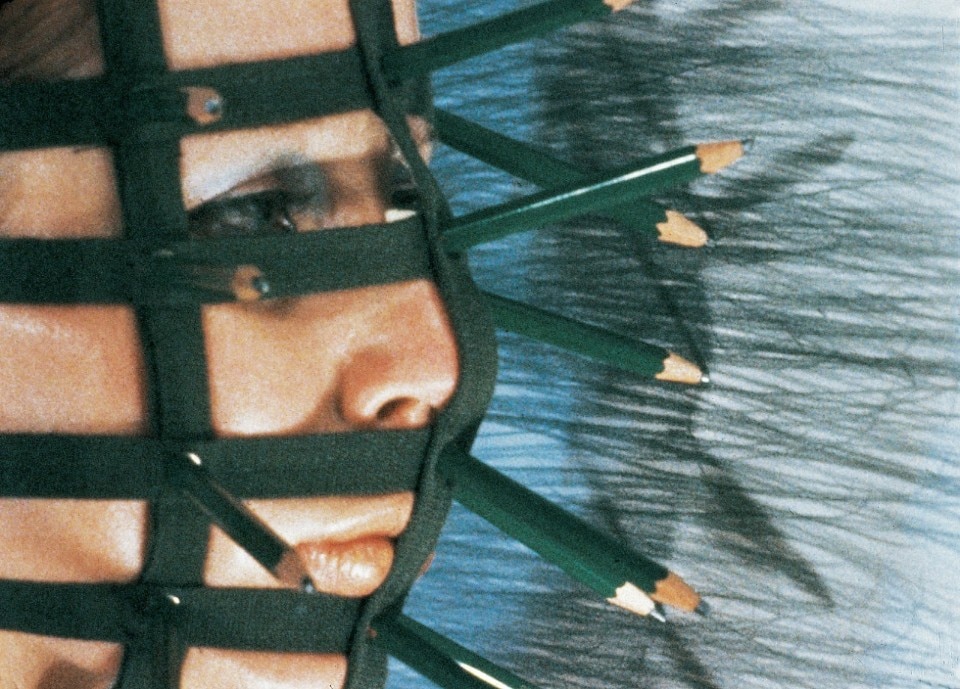
They have been used by Rebecca Horn in several works, including The Rebel Moon (1991), a major work exposed in Basel: a group of typewriters in action, hanging from the ceiling. The works of this group also offer a sociological vision of the machine as an extension of the body, where numerous objects with feminine connotations can be found. In fact, a final thematic group concerns the hand and feet extensions. One of the first works in this category are the Handschuhfinger (Finger-gloves, 1972). With the help of extensions made of balsa covered in a black cloth, the artist explores her environment as if she were endowed with tentacles. Tentacle seeming to reconnect with one of the most enchanted poetic declaration, displaced at the beginning of Body Fantasies. It’s about Weisser Körperfächer (White body fan, 1972) where the artist echoes man’s ancient fascination for creatures endowed with wings and feathers. By using straps, she fixed to her body a pair of semi-circular wings in white canvas which unfolded when she raised her arms. These sails were stiffened by ribs evocative of the first aircraft, above all making us think about, by their movements and the manner in which they cover the body, the wings of a butterfly.
Moreover, a film documents the series of movements tried out with this apparatus: opening, closing, control facing the wind, ways of covering up and of revealing the body, not forgetting the complete opening up of the wings. These are dynamic models with which Rebecca Horn pursues the exploration in a series of sculptures like the naked body enveloped by the plumage of the Paradieswitwe (The widow of Paradise), 1975), the parade of Die Pfauenmaschine (The machine-peacock, 1979) of the Hängender Fächer (The suspended fan, 1982), the wheel of feathers of the Zen der Eule (The Owl’s meditation, 2010).
- Exhibition Title:
- Rebecca Horn. Body Fantasies
- Opening dates:
- From 5 June to 22 September 2019
- Curated by:
- Dr. Sandra Beate Reimann
- Venue:
- Museum Tinguely
- Address:
- Paul Sacher-Anlage 1 P.O. Box 3255 CH-4002 Basel


